Öhlins' RXF38 m.2 mountain bike suspension fork is the brand’s second iteration of the RXF38 platform.
It uses chunky 38mm-diameter stanchions and shares its TTX18 damper with the dual-crown Öhlins DH38 fork that World Cup racers such as Loïc Bruni have ridden to great success.
Being Öhlins’ biggest single-crown fork, it’s aimed at the hardcore trail, enduro and electric mountain bike markets.
It’s available for 29in wheels only, but its air spring can be swapped out to give 160mm, 170mm or 180mm of travel.
Given Öhlins’ vast suspension know-how and legendary reputation, the relatively small Swedish company is going head-to-head with Fox’s 38 and RockShox’s all-new Charger 3 ZEB with the RXF38.
It retails for £1,450 / $1,450, and the 51mm-offset, 170mm-travel, 29in-wheel version I tested weighed 2,354g (192mm steerer) on my scales.
Öhlins RXF38 m.2 details and specifications
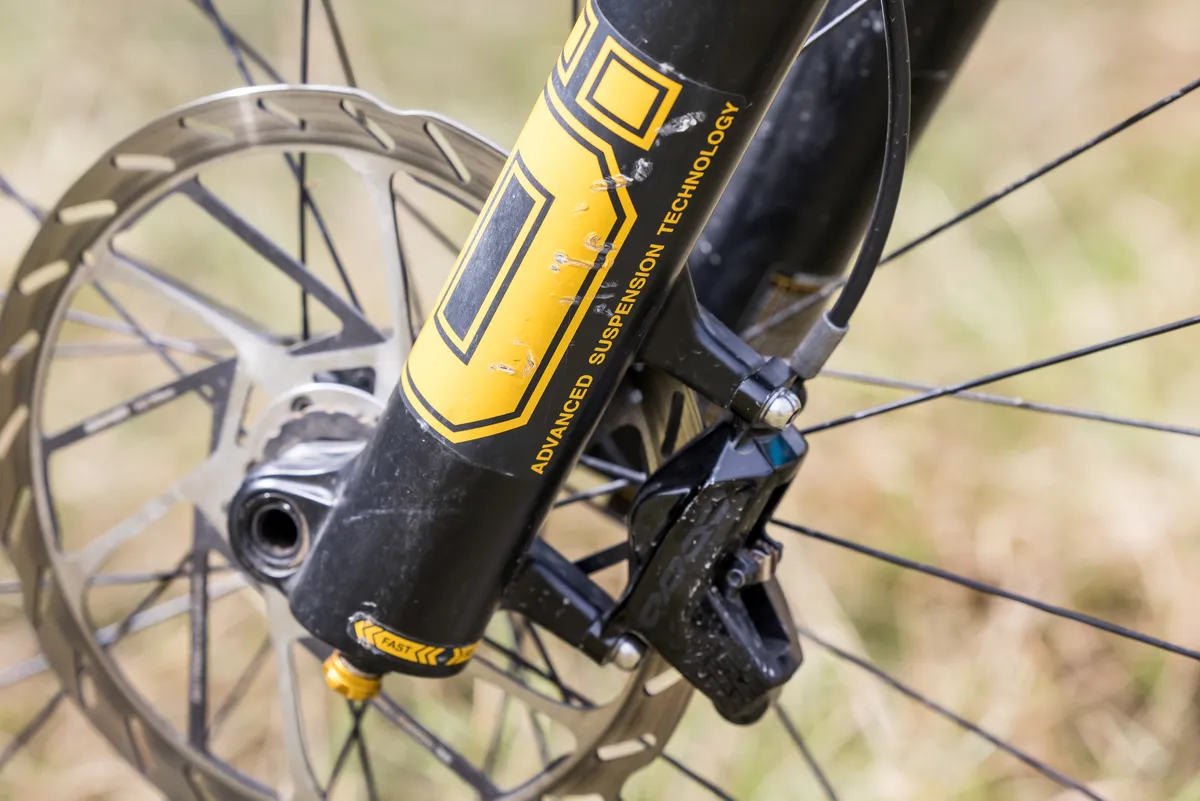
Chassis details
Öhlins claims the RXF38 “delivers hard-hitting dual-crown downhill performance to the single-crown scene” by taking the DH38’s chassis and adapting it for single-crown use, while still using stanchions with the same wall thickness as its bigger sibling.
In doing so, Öhlins claims it has tuned how stiff the forks are and how much flex they have in a bid to balance steering accuracy and control without making them feel harsh. The brand claims it has maximised the stiffness-to-weight ratio, which was a key consideration given the amount of climbing associated with enduro riding.

It has a floating axle, like the Fox 38 and 36 design. This uses a pinch bolt to clamp the axle in place once it has been installed in a bid to reduce friction caused by binding from mis-aligned lowers.
There’s a cable guide attached to the arch with a 2.5mm Allen bolt. The fork has a 200mm disc rotor post mount. It’s available in both 44mm and 51mm offsets, too.
TTX18 damper specifications
Controlling the damping in the RXF38 is Öhlins’ TTX18 twin-tube unit, also used in Öhlins’ rear shocks and forks.
The twin-tube design means oil flows in a different way compared to a single-tube unit. The TTX18’s oil is controlled during the compression and rebound strokes, where it can flow in both directions through the 18mm main piston and via an additional chamber between the main piston and the damper’s outer wall.
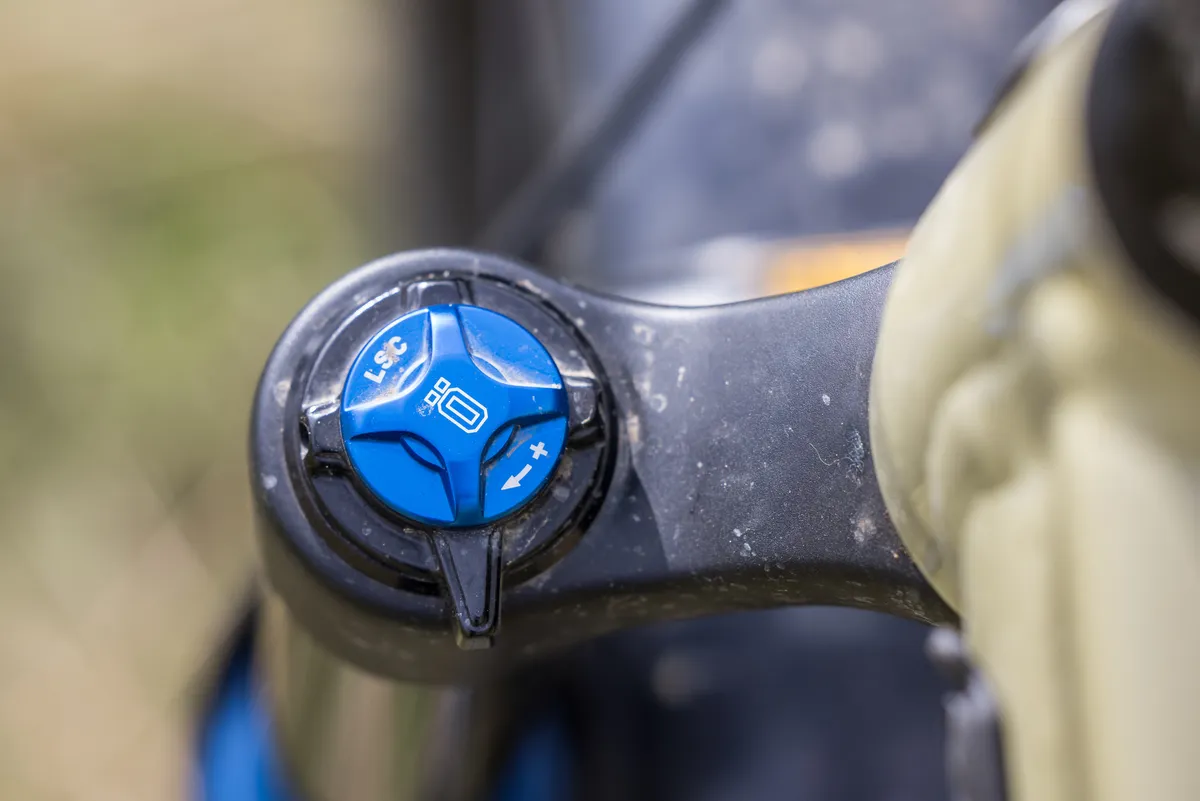
The TTX18’s main piston is spring-backed, similar to RockShox’s Charger 3 and Fox’s GRIP2 units.
Öhlins says it has worked hard on tuning the oil’s pressure within the damper, increasing it and making it balanced in a bid to “improve damping valve response”.
Effectively, the Swedish brand is claiming its damper design improves small-bump sensitivity but also creates great mid-stroke support and deep travel control.
The damper has 15 clicks of low- and four clicks (where one functions as a lockout) of high-speed external compression adjustment, and 15 clicks of external low-speed rebound adjustment.
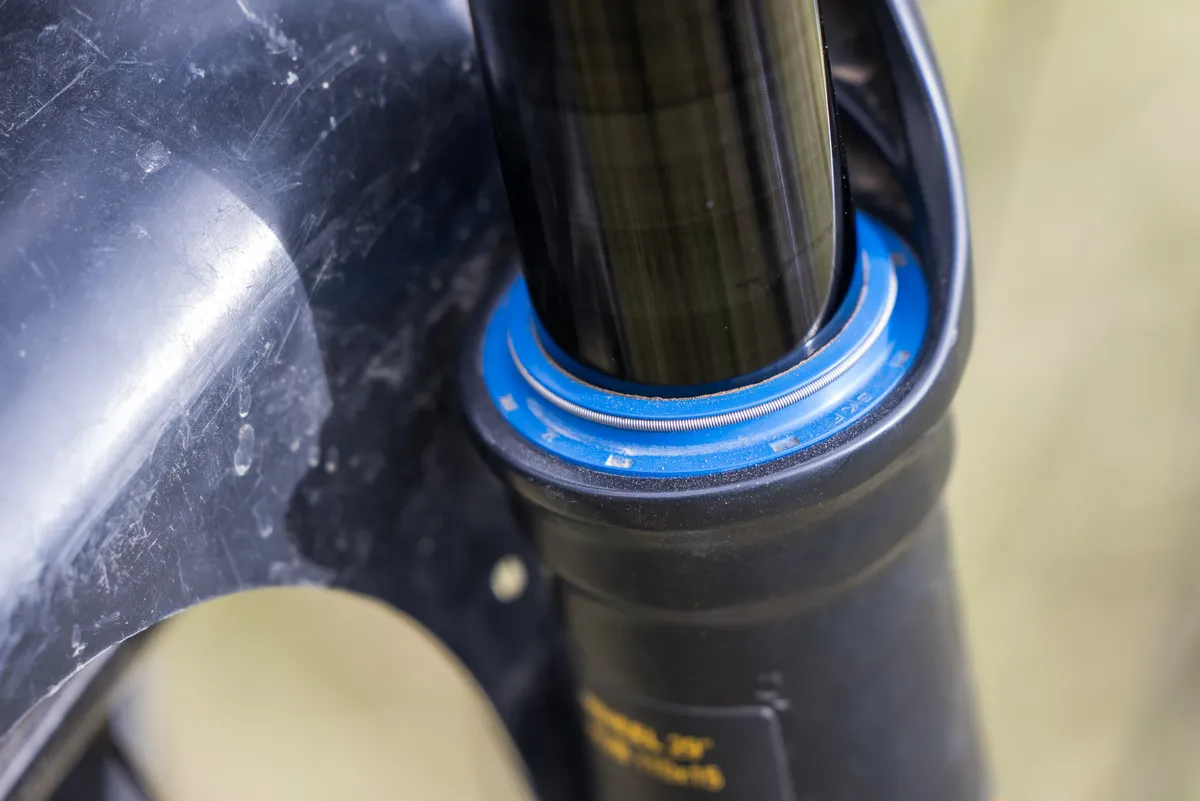
Öhlins has developed a ‘setting bank’ for the TTX18 damper to extend its adjustability, where custom-made shim stacks can be installed. Country-specific Öhlins partners can offer advice on what tune you may require, and are able to carry out the work, although this will be at an additional cost.
My test fork was fitted with the C40/C40 and R25 compression and rebound damping shim stacks, both of which Öhlins told me were its stock aftermarket tunes.
Three-chamber air spring
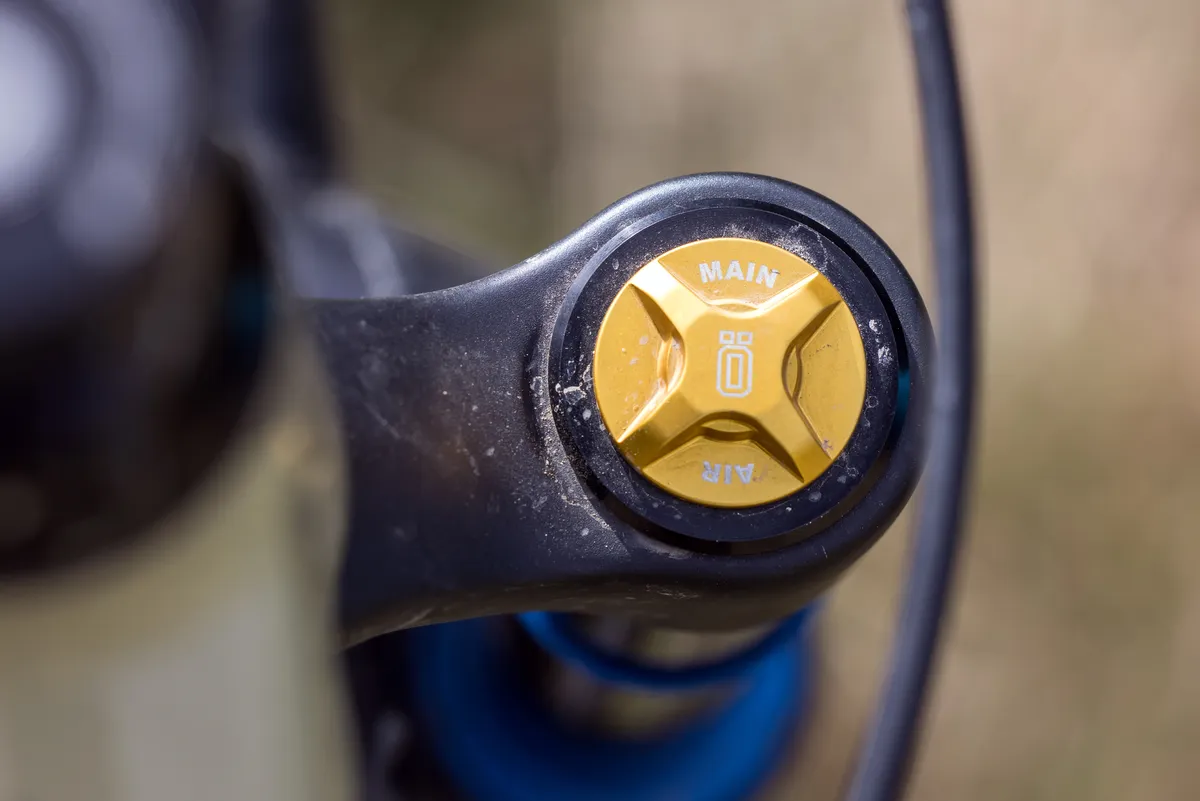
Öhlins’ three-chamber, twin-piston air spring has a single positive and negative chamber valve on the top of the fork and a secondary ramp-up chamber valve on the bottom.
The positive and negative chambers are self-equalising – in the same way most other forks are – but instead of using air spring volume-reducer spacers to control ramp-up or progression, the RXF38 uses air in the ramp-up chamber to do a similar job.
This means the fork’s spring curve can be fine-tuned compared to adding or removing fixed-sized volume-reducer spacers.
The ramp-up chamber’s pressure dictates how quickly and how much it changes the size of the main spring’s chamber as the fork compresses: a higher pressure in the ramp-up chamber will cause a quicker and bigger reduction in the size of the main spring chamber as the fork compresses.
In theory, when the ramp-up chamber’s pressure is set correctly (roughly double the main spring pressure, according to Öhlins’ setup guide), when the fork is fully extended the ramp-up chamber’s IFP will ‘squash’ the main chamber to its smallest volume.
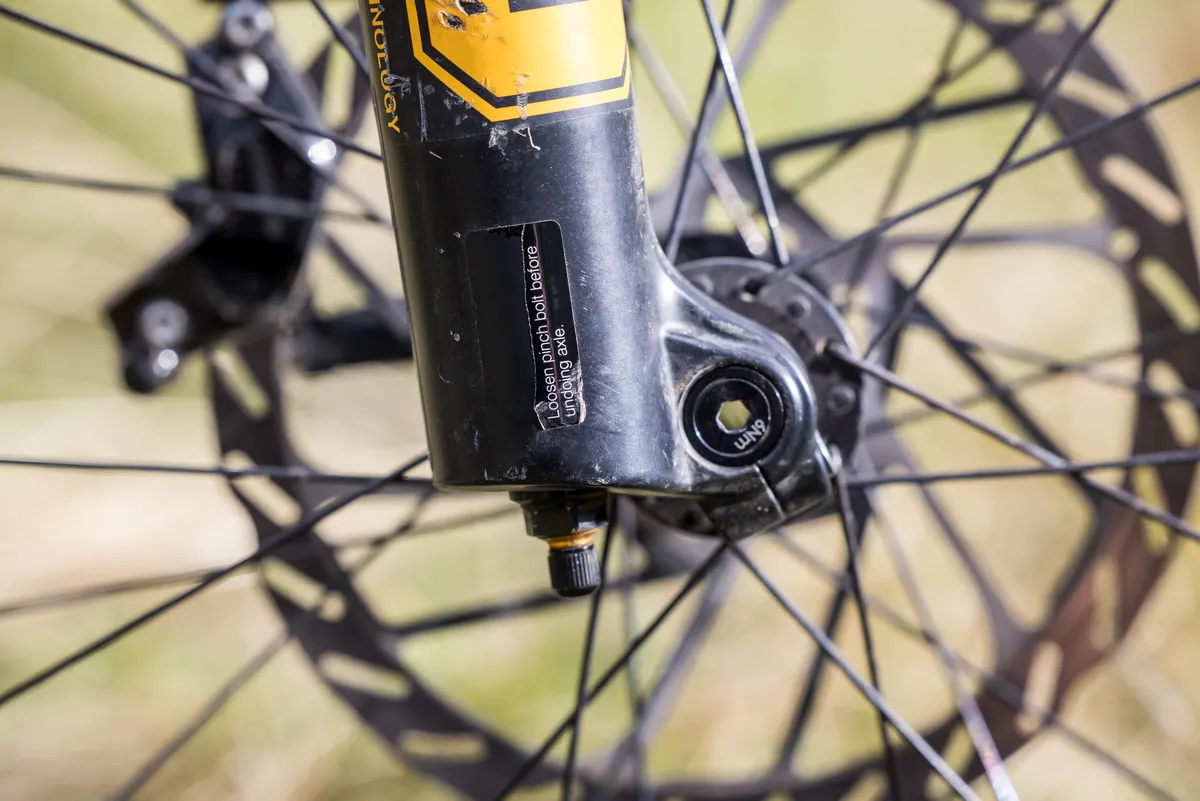
As the fork compresses, the pressure in the two chambers begins to equalise because the main chamber’s pressure increases as it compresses. This causes the main chamber’s air volume to increase because the ramp-up chamber’s IFP is being pushed ‘out’ of the main chamber’s cavity.
Increasing the pressure in the ramp-up chamber delays the point at which the main chamber’s pressure equalises or exceeds the ramp-up chamber’s pressure. This effectively increases progression because the main chamber’s volume remains smaller for longer.
Öhlins states all its spring chambers can be adjusted further using volume-reducing spacers.
Importantly, from the factory only the negative air spring chamber is installed with a volume-reducer spacer.
Öhlins RXF38 m.2 performance
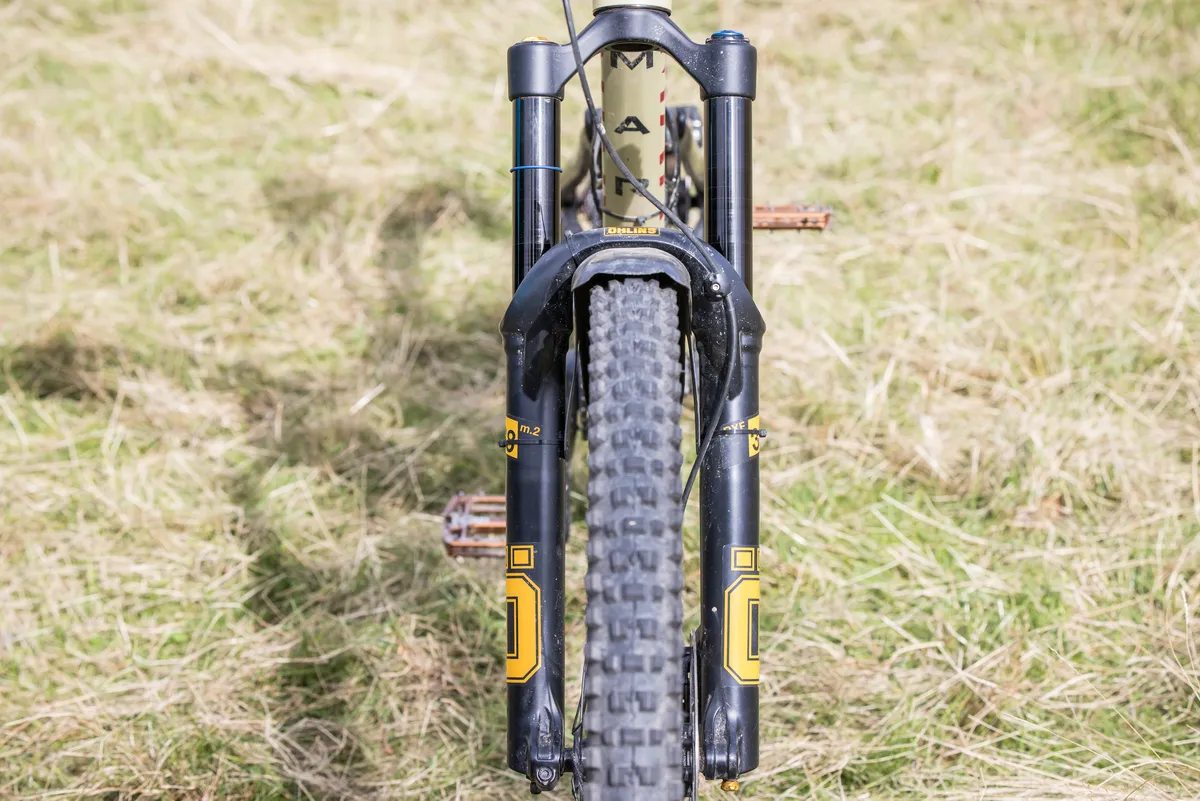
I tested the RXF38 m.2 fork over several months across the UK, from my local trails in Scotland’s Tweed Valley, host to the UK’s round of the Enduro World Series and British Downhill Series events, through to trail centre runs in the Forest of Dean, and plenty of other trails in between.
Conditions ranged from seriously wet through to hard-baked dust during one of the driest summers the UK has seen.
The fork was fitted to my Marin Alpine Trail XR test bike, which was the same bike I used to test RockShox’s 2023 Lyrik and a host of other products. The familiarity of the frame and parts meant I didn’t have to adapt to other variables before I could get a handle on the fork’s performance.
Öhlins RXF38 m.2 setup
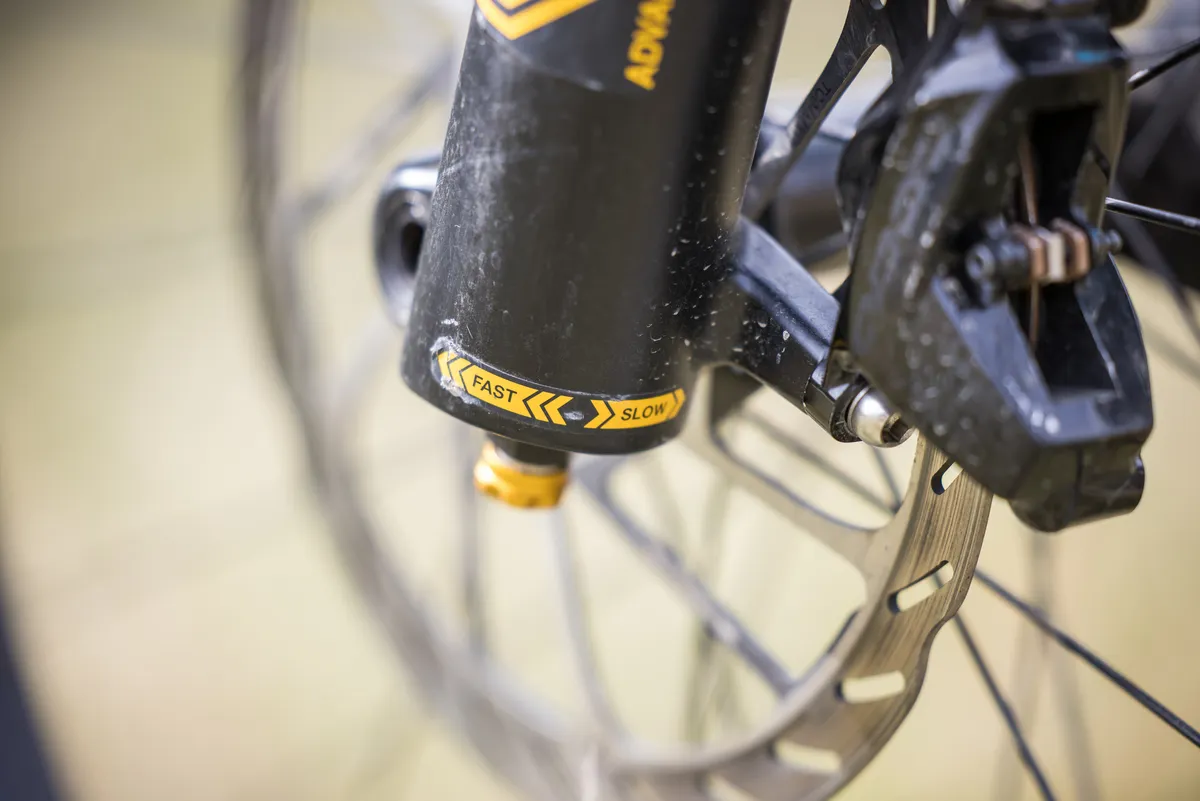
Starting with Öhlins’ recommended settings for my weight and bike using the online setup calculator and setup table supplied in the fork’s manual I put 105psi in the main spring chamber and 185psi in the ramp-up chamber. This gave me roughly 20 per cent, or 35mm, of sag.
I started with the low- and high-speed compression adjusters fully open, given Öhlins doesn’t supply recommended damper settings. Instead, the manual provides advice on which adjustments to make when the bike rides in a certain way.
Initial impressions
Initial impressions weren’t hugely positive, where the initial part of the RXF38’s travel was harsh, especially if the fork was entering into its stroke from full extension. It lacked much of the small-bump smoothness the Charger 2.1 Lyrik and Fox 38 GRIP2 forks I'm used to have.
This resulted in considerable hand soreness, something I don’t usually suffer from, and a reduction in usable grip.
Once they were into their travel, things improved, and on medium hits they felt impressively smooth and controlled, absorbing rocks, roots and mid-sized holes with brilliant composure.
However, with the ramp-up chamber set to the recommended pressure, bottom-outs were too frequent, but the off-the-top smoothness was also lacking.
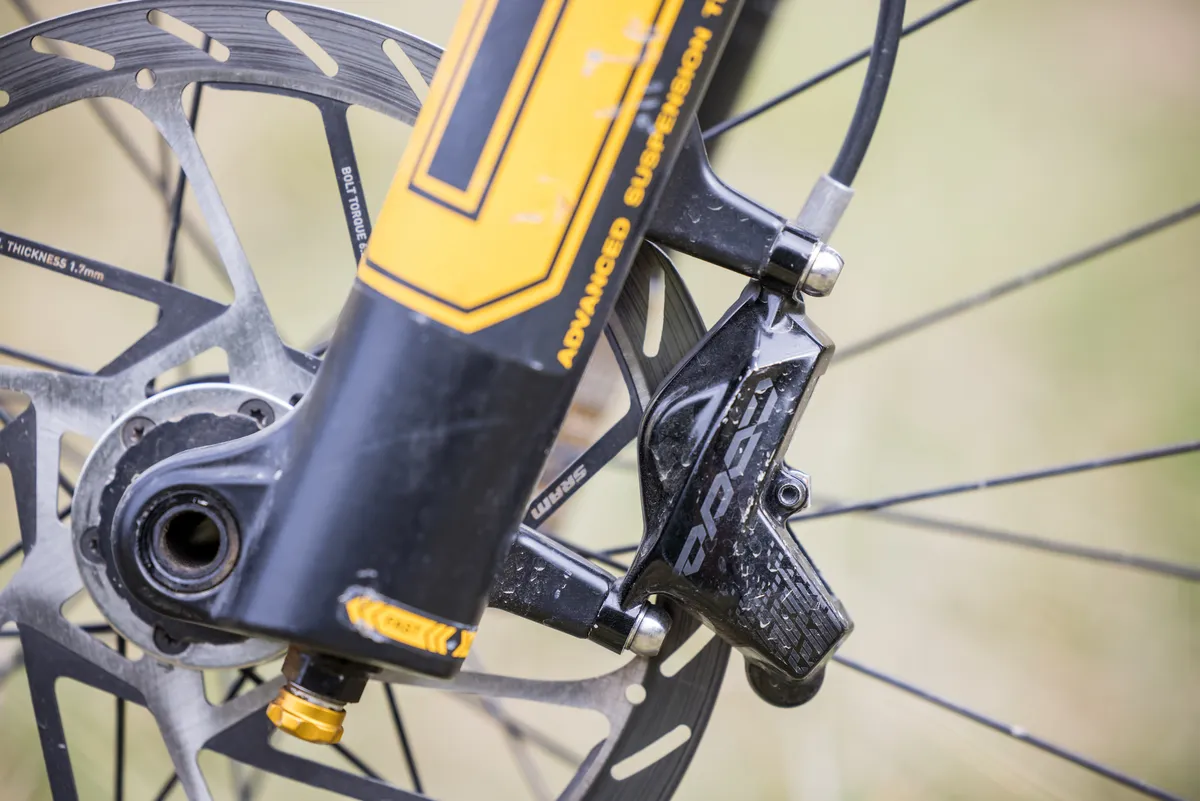
This put me in a bit of a catch-22 situation, where I wanted to reduce high-speed compression damping and spring pressure to improve overall smoothness, especially off-the-top, but also wanted to increase the ramp-up chamber pressure and potentially main spring pressure to give more bottom-out resistance.
Back to the drawing board
After chatting with Öhlins about my initial impressions, I was told the best way to get its forks working as they should is by relying on the compression damping to control ride height and bump absorption rather than spring pressures.
To compensate for the reduction in main spring pressure and corresponding increase in sag, I added low-speed compression damping.
After incrementally dropping spring pressure to improve sensitivity, I ended up with 90psi in the main chamber and 230psi in the ramp-up chamber.
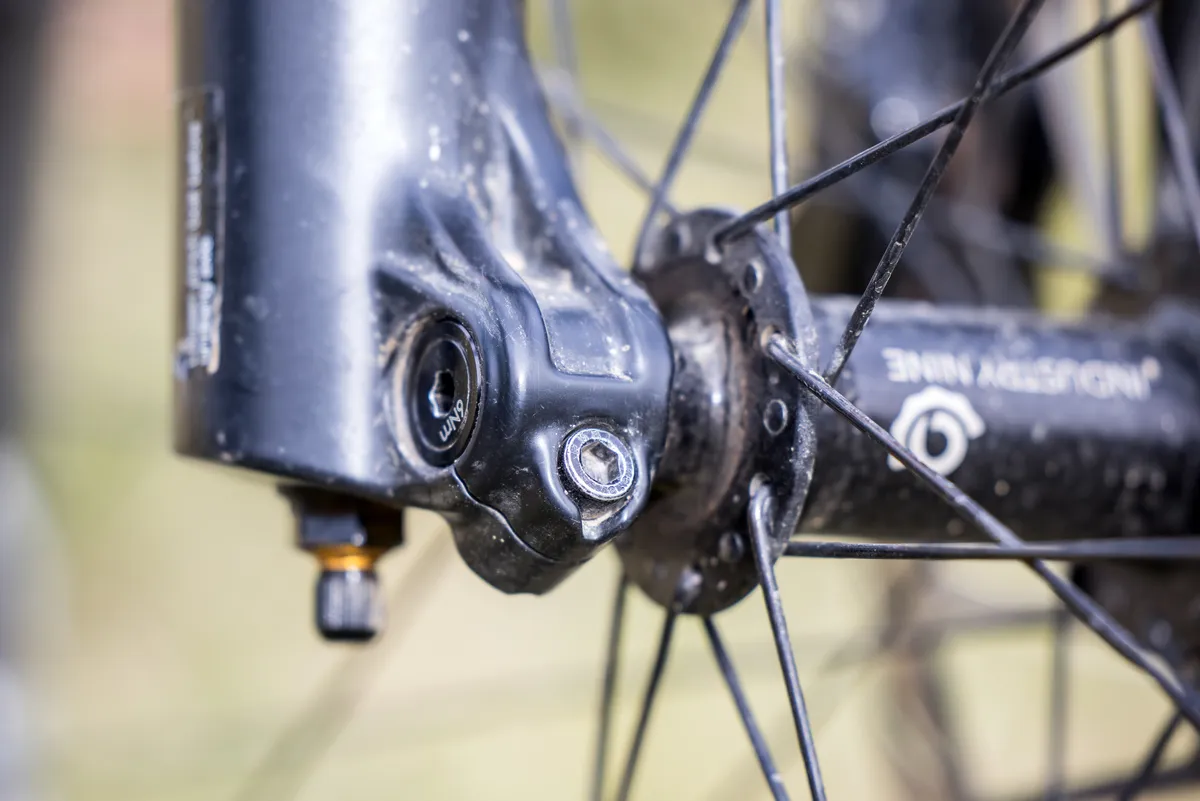
I added 9 clicks from fully open of low-speed compression damping, but eventually backed this out to 6 clicks.
These settings gave me roughly 22 per cent, or 37.5mm, of sag, which is more than I would usually run.
Try and try again
I was disappointed to find that despite decreasing the main spring pressure, off-the-top smoothness hadn’t improved significantly, but I had sacrificed some end-stroke bottom-out resistance and an element of ‘sogginess’ had crept into how they ride.
Clearly, another factor was at play.
As I mentioned, the negative spring chamber was fitted with a volume-reducing spacer from the factory. Öhlins told me that larger negative spring chambers aren’t required when a fork is set up to rely on its damper rather than spring pressure to provide support, and is why the RXF38 is fitted with the volume reducer.
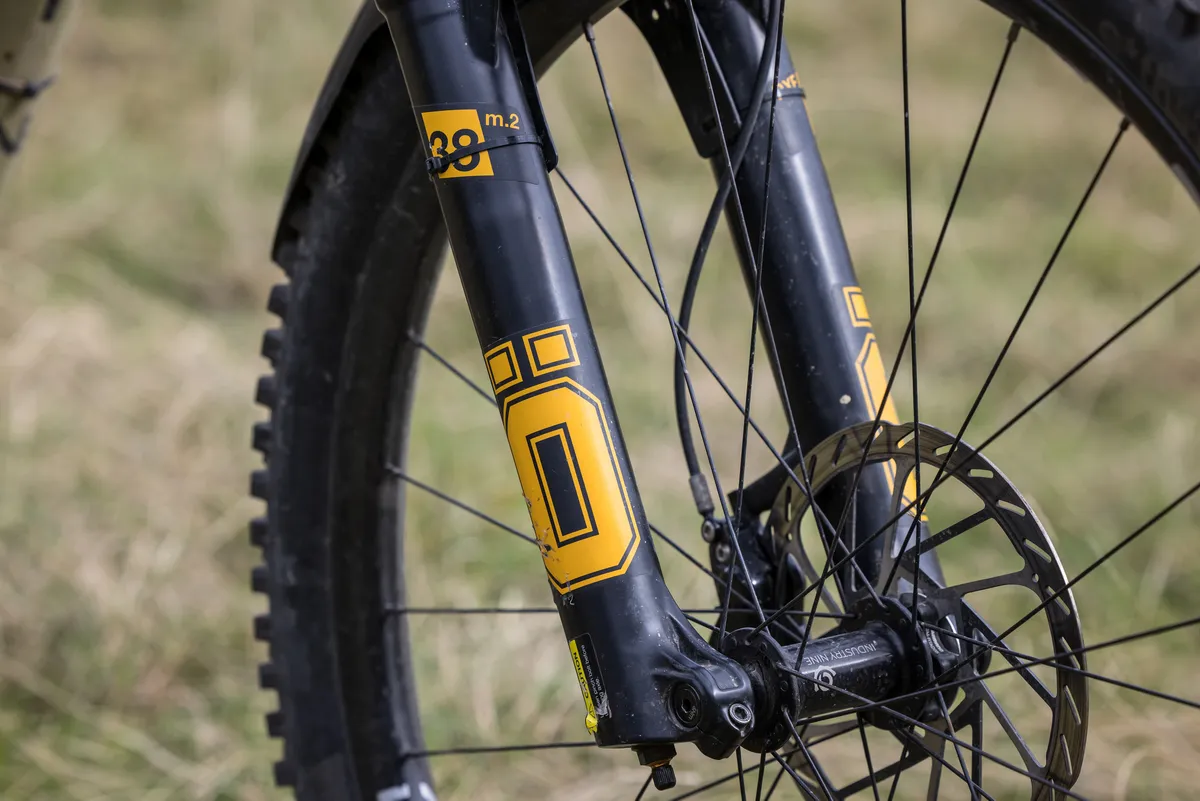
Although I understand Öhlins’ argument, experience with the industry’s top forks tells me larger negative spring volumes do create a plusher, smoother and more sensitive ride, where other tech such as positive spring volume-reducer spacers and dampers are used to mitigate any negative effects elsewhere in the travel.
At the EWS Tweed Valley, I asked the Öhlins service representative to remove the negative spring volume reducer, but to also check the fork’s bushing and alignment to make sure nothing else was at play affecting performance.
A breakthrough change
Once the spacer had been removed, I followed the setup advice given to me by the Öhlins representative, putting 100psi in the main spring chamber and 230psi in the ramp-up.
Over repeated laps on the same tracks, I adjusted the low-speed compression to feel, ending up with 6 clicks from fully open. I set rebound to taste, which was also fully open.
This setup gave me 33mm, or 19 per cent, sag, much closer to what I'm used to running.
Öhlins RXF38 m.2 ride impressions
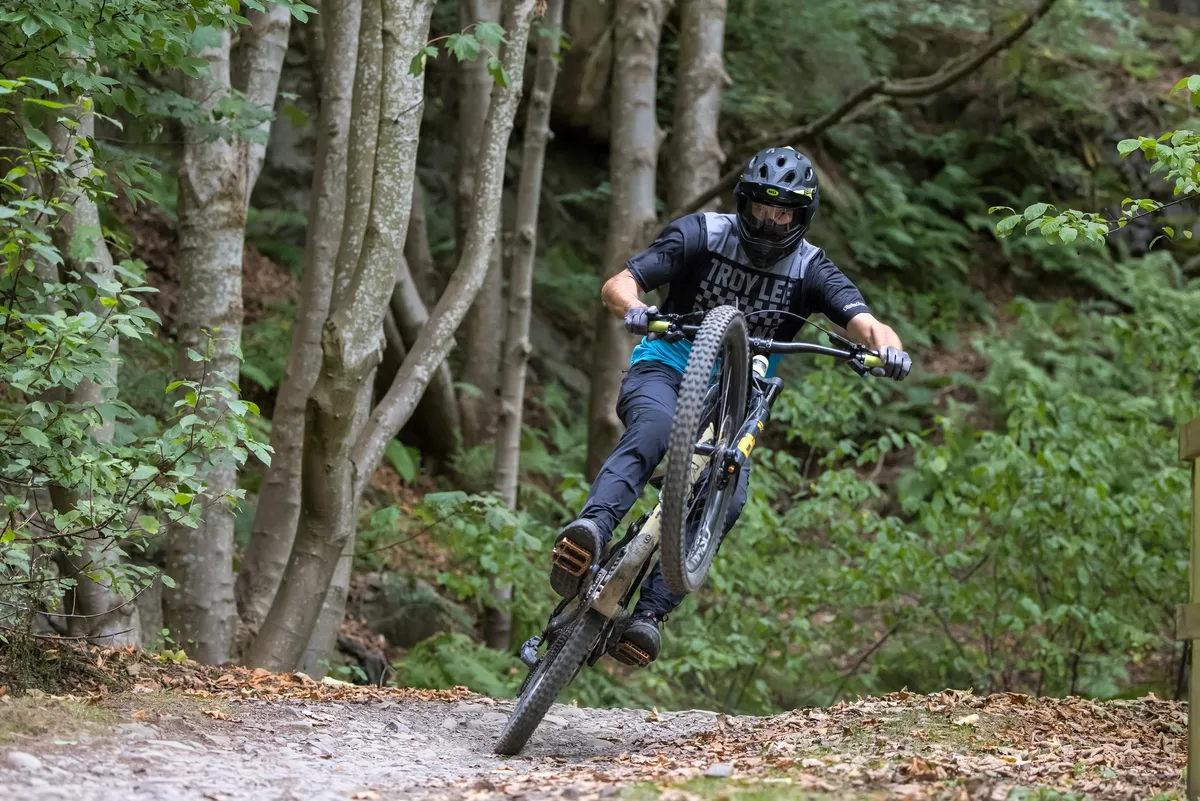
The change in how they felt was night and day, where the RXF38’s off-the-top performance was as smooth and controlled as the Fox 38, and Charger 3 and Charger 2.1 ZEB.
Trail chatter – whether that was from a worn trail centre surfaces or over smaller roots and rocks that cause the fork to extend to full travel – was marvellously absorbed, providing huge amounts of grip and comfort.
The impressive performance was extended to mid-size hits such as large roots and rocks, or braking bumps and smaller compressions.
Thanks to the damper’s ability to absorb these hits in a controlled and effective way, the RXF38 had the same effect as reducing speeds on a trail: bike stability, ride height and smoothness were all enhanced significantly by the fork making it feel as if I was hitting obstacles and features slower than I was.
This gave me more time to think and control the bike, and meant I could access higher speeds or get a calmer, less hectic ride.
Mid-stroke support, once I’d dialled in the low-speed compression, and bottom-out resistance were impressive.

I’d frequently use 95 per cent or more of the forks' travel while descending, but never once felt as if they were diving under braking or when hammering into sharp, steep on-the-brakes hairpins.
The same was true when hitting high-speed, high-load berms or compressions, where bar height remained stable, helping improve control and speed.
In terms of the chassis, the RXF38 is brilliantly stiff where it needs to be, without being harsh and fatiguing where it doesn’t.
It has a subdued and damped quality on the harsher, faster tracks, but resists twist and flex in high-load situations, aiding steering accuracy and control.
This culminated in the ability to push hard through the front wheel and drive grip in almost any situation, where I was confident the damper and spring, along with the impressive chassis, were there to provide the support and control needed to ride hard and fast.
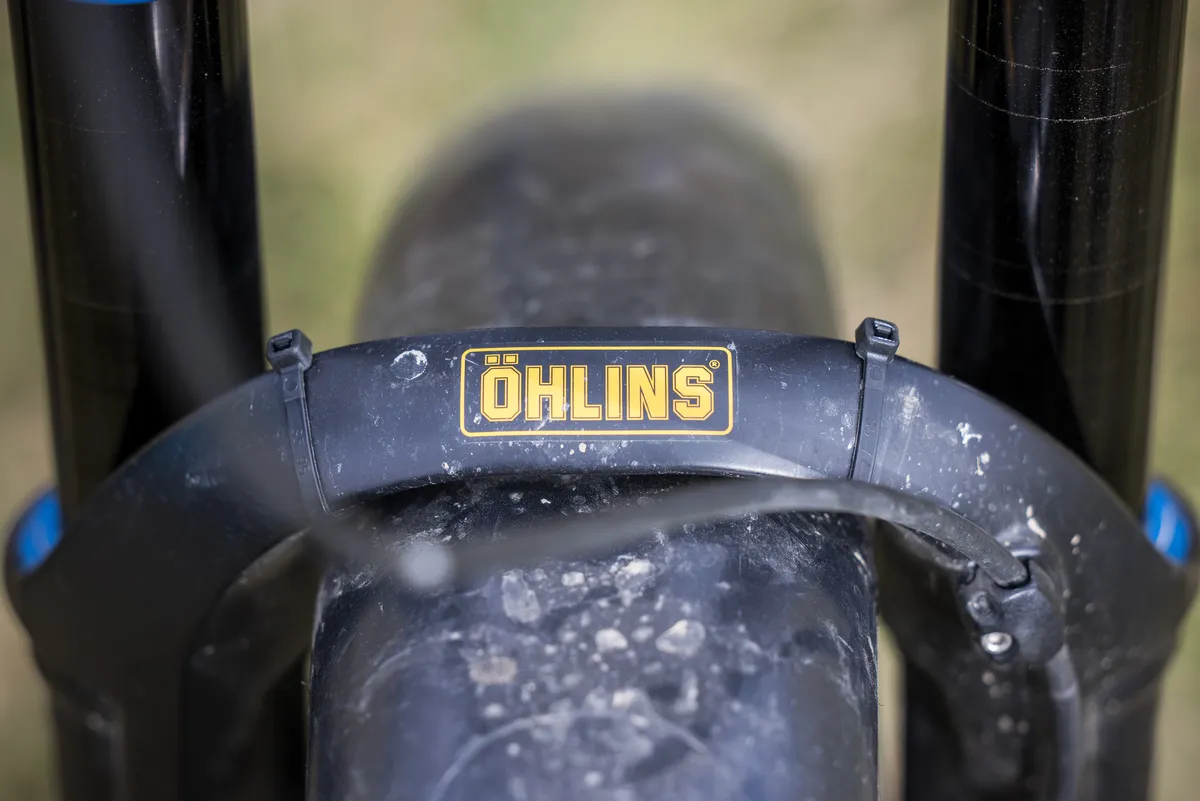
Despite increasing the negative spring’s volume, which should make the forks more likely to compress into their travel, I couldn’t discern any negatives, given the impressive control I've mentioned.
This begs the question, why is the RXF38 m.2 fitted with the negative spring volume reducer from the factory? I suggest a sensible move would be to sell the fork with it uninstalled, but give the consumer the option to fit it themselves.
How does the Öhlins RXF38 m.2 compare to the RockShox Lyrik and ZEB, and Fox 38?
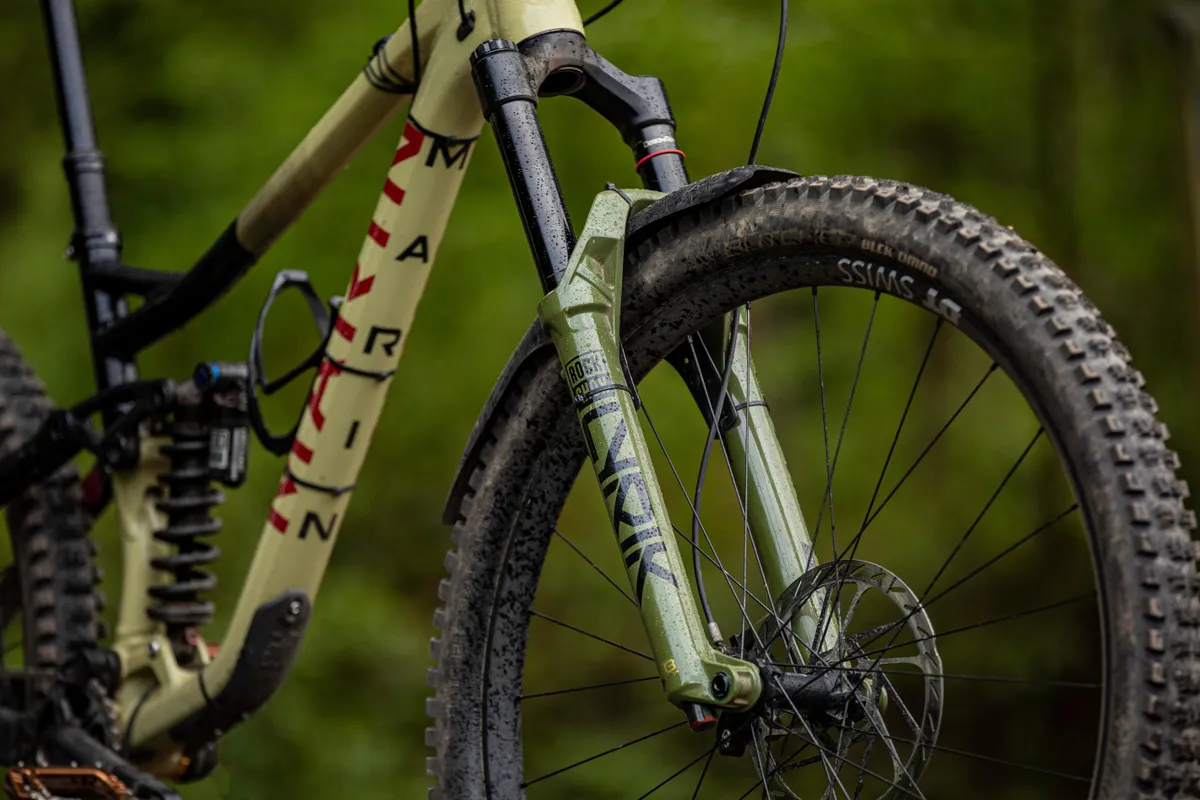
In terms of smoothness, there was little to separate the Fox 38 and RXF38, both feeling brilliant at the start of their travel on the type of high-speed hits that result in hand fatigue.
It wasn’t quite the same deeper into their travel. The Fox 38 tended to compress deeper into its mid-stroke through compressions or on the brakes, where it finally rests on the spring’s ramp-up rather than support built by the damper.
Adding more low-speed compression damping helps to remedy this in the 38, but doing so can create harshness, something the Öhlins TTX18 damper doesn’t appear to suffer from.
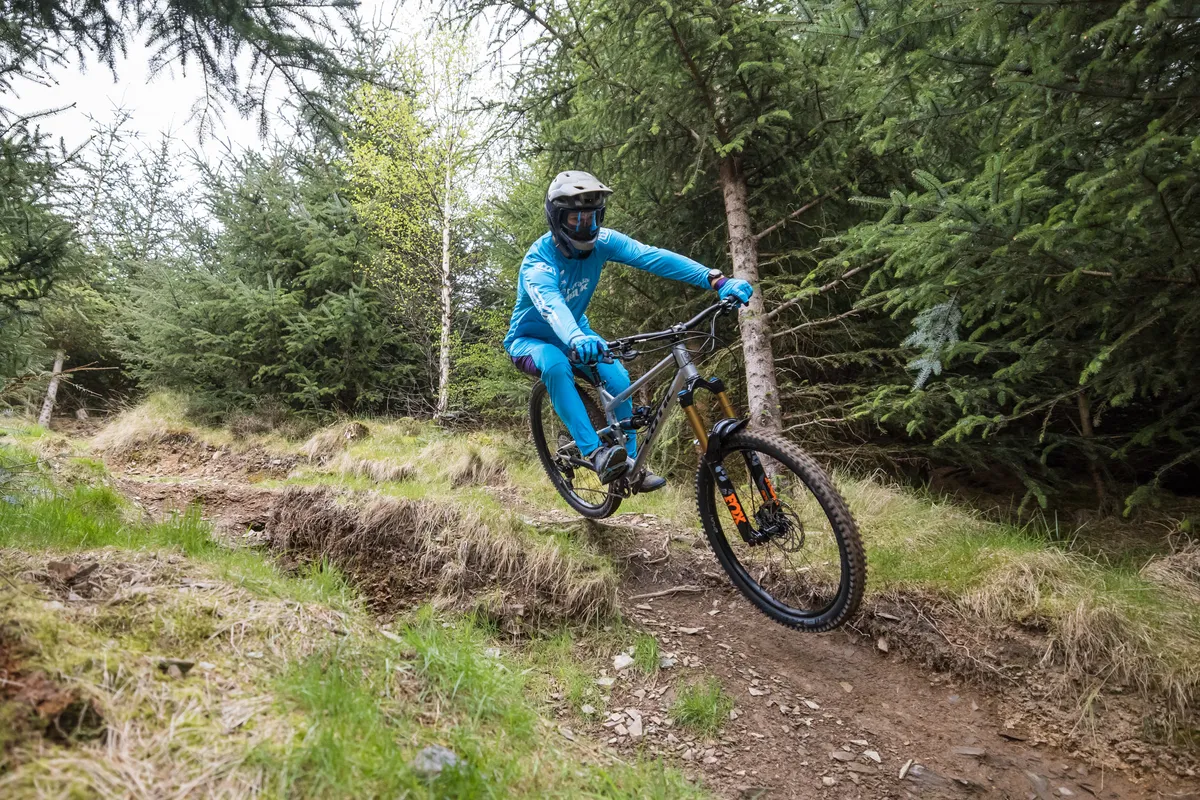
Compared to RockShox’s MY21 Lyrik, off-the-top performance is pretty similar, with both forks feeling supple and smooth on harsh, chattery terrain. But, like GRIP2 Fox forks, the Charger 2.1 Lyrik has less damper control than the RXF38. Increasing compression damping via the adjusters can result in some harshness on the Lyrik and Fox forks compared to the RXF38.
Line it up against the MY23 Charger 3 Lyrik and it’s all change. Both have similar amounts of damper support, especially in the mid-stroke and deeper into the travel towards bottom-out.
However, once the negative air chamber volume reducer had been removed, the RXF38 beat the Lyrik in terms of small-bump smoothness and compliance. With the spacer installed, arguably the Lyrik is still smoother than the RXF38.
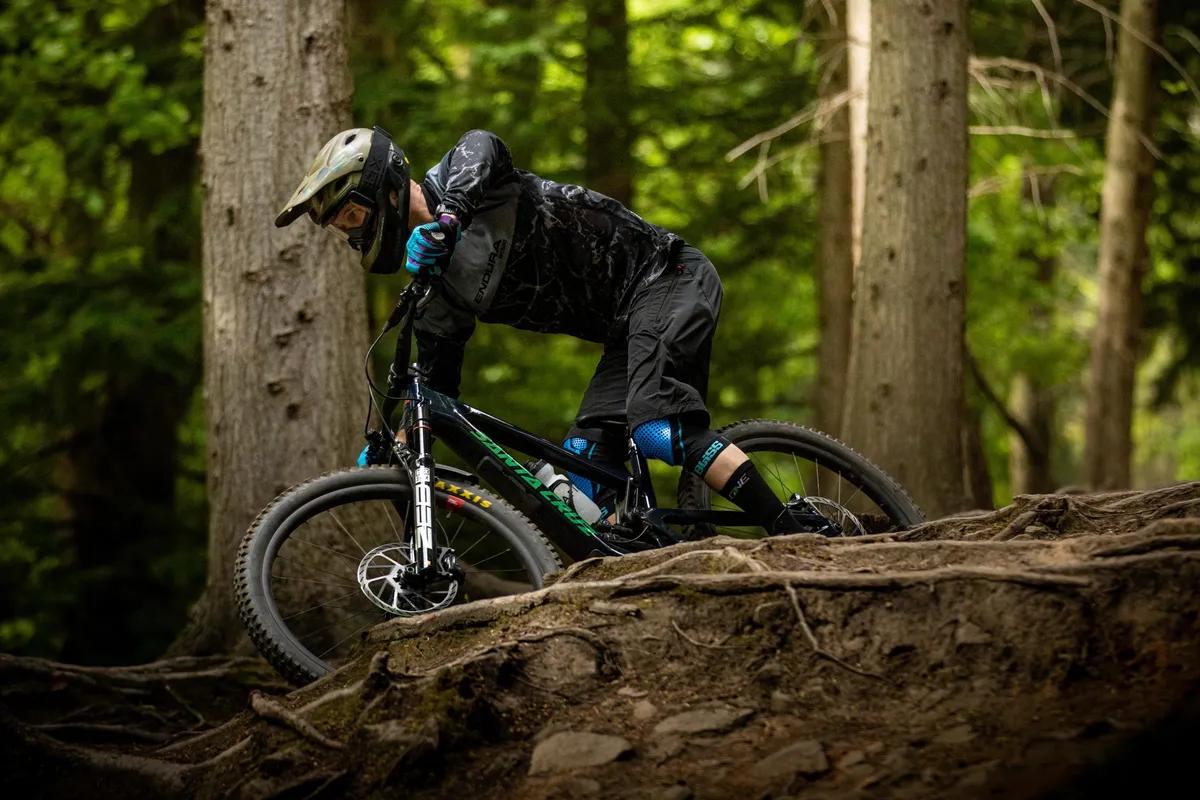
The closest competitor in terms of feel is the ZEB, in both the Charger 2.1 and Charger 3 iterations. Off-the-top smoothness is almost equal across all three forks, with the Charger 3 ZEB and RXF38 edging ahead of the Charger 2.1 in terms of mid-stroke support and bottom-out resistance.
For damper adjustment, the Charger 3 and TTX18 offer similar performance with a good, usable range. However, the Charger 2.1’s rebound adjustment is wider and more usable, where I had to run the Charger 3 and TTX18’s adjuster fully open to get them fast enough for my tastes.
Öhlins RXF38 m.2 bottom line
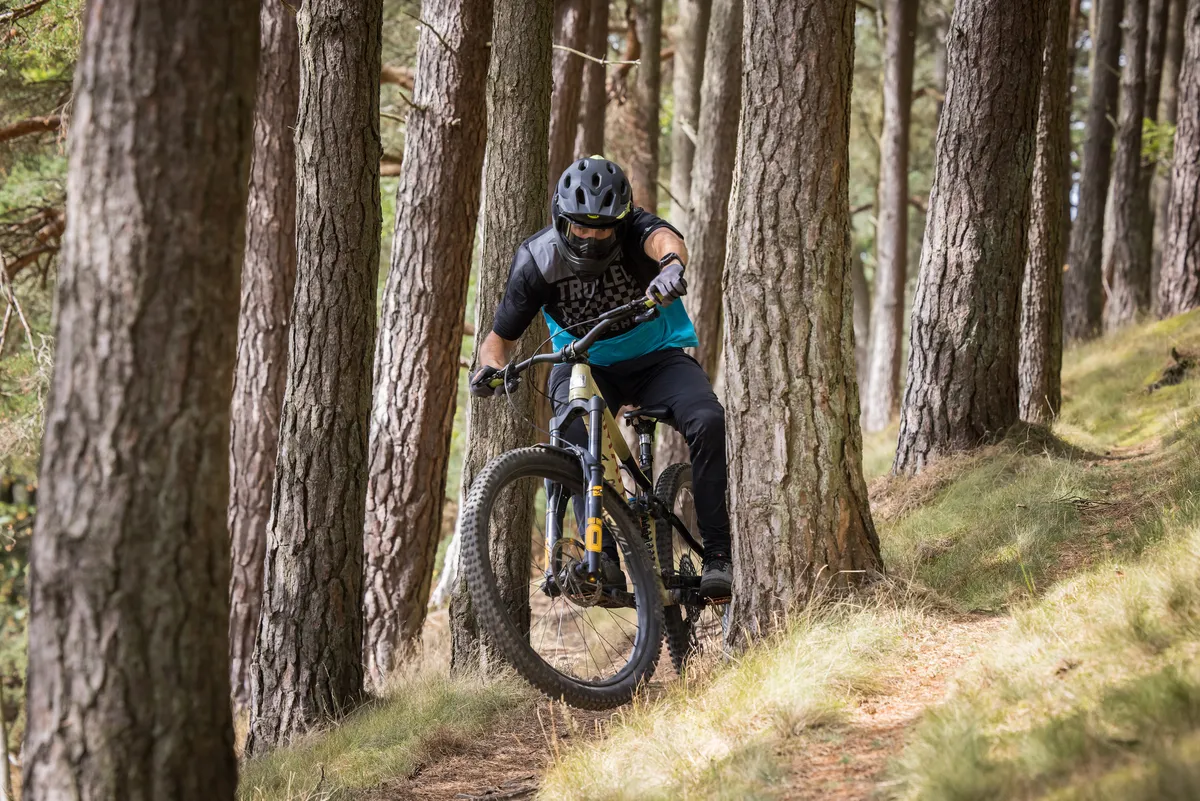
Once I’d got the RXF38’s air spring sorted, the performance on offer was as impressive as I was hoping it would be.
Off-the-top sensitivity was brilliant, while the mid-stroke support meant I could hammer turns or ride through holes and compressions as hard as I wanted without the bike suffering from unwanted pitching. The damper’s range of performance on the trail, and depth of adjustability was truly impressive.
Arguably, the rebound damping tune was too hard for my tastes and weight, and could also be an issue for lighter riders wanting a quicker-rebounding fork. Öhlins does offer a range of tunes, however, so finding the right one for your needs shouldn’t be too hard.
That said, even with its stock damper tune, it's one of the best-performing out there.
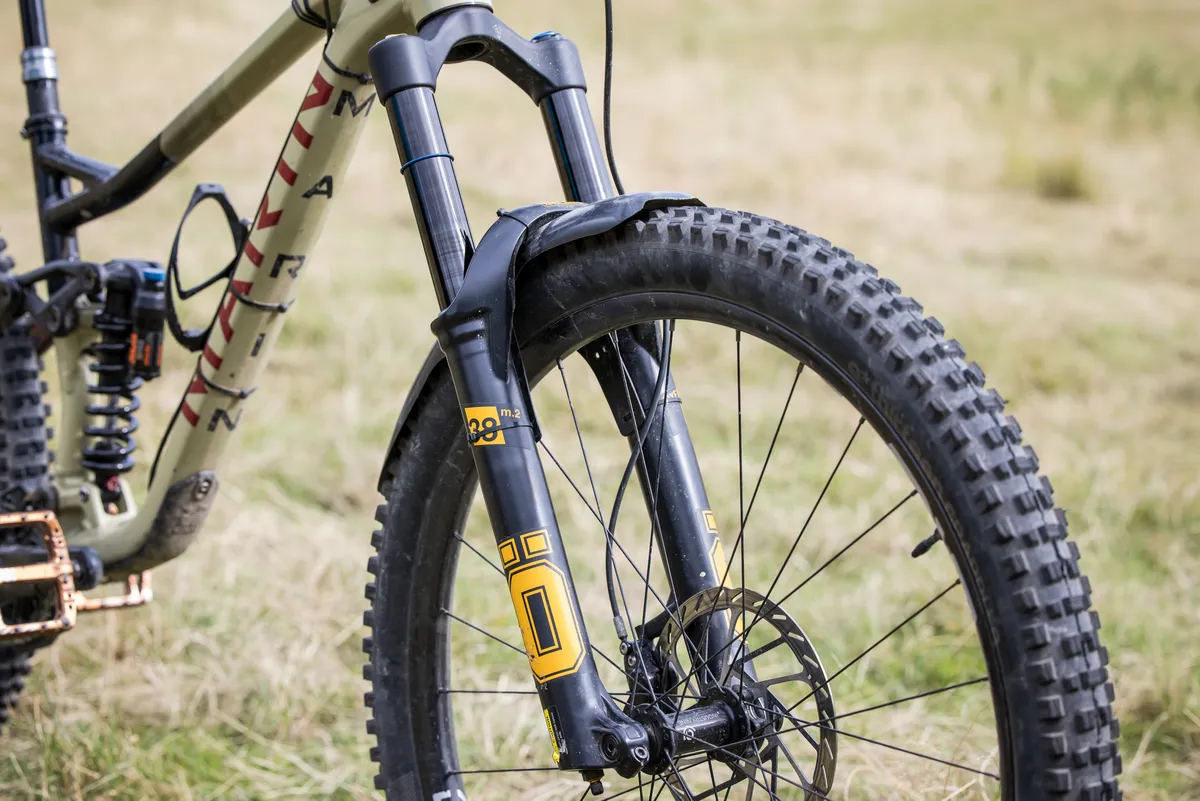
Thanks to the ramp-up chamber, bottom-out resistance was both easy to dial in (even on the trail) and abundant. This meant I used the fork's travel effectively, even bottoming out without noticing.
Coupled with a brilliantly tuned chassis, the RXF38 m.2 is a formidable enduro-ready, high-speed friendly fork.
It’s just a shame this performance isn’t available to people off the shelf, and the installed negative spring volume-reducer spacer isn’t communicated in any of the fork’s manuals or tuning guides.
If you make sure the spacer is removed, the RXF38 m.2 is one of the best-performing forks on the market.
Product
| Brand | ohlins |
| Price | 1450.00 GBP,1450.00 USD |
| br_whatWeTested | Öhlins RXF38 m.2, 170mm travel, 29in wheel, 51mm offset |
| Weight | 2354.0000, GRAM (170mm travel, 29in wheel, 51mm offset) - 192mm steerer, axle included |
Features
| br_spring | air |
| br_lockout | yes |
| br_wheelSize | 29in_700c |
| br_axle | 15x110mm, bolt through |
| br_damperAdjust | High and low speed compression, low speed rebound |
| br_offset | 51.0000 |
| br_offset | MILLIMETER |
| br_travel | 170.0000 |
| br_travel | MILLIMETER |
| br_stanchionDiameter | 38.0000 |
| br_stanchionDiameter | MILLIMETER |
| Features | TTX18 damper, three chamber air spring, 200mm disc rotor post mount |
